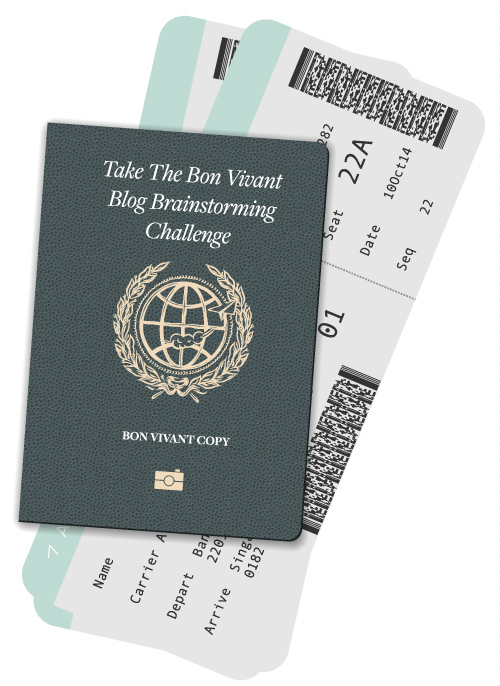Want to know how to market your travel business? Well, it all starts with having people to market to. That’s why you have to build your list. And one of the BEST ways to do that is with something called a lead magnet.
I’m talking about the list-building tool that also moonlights as a few other names: opt-in offer, freebie, irresistible free offer (IFO) …
Basically, it’s some sort of content (like a guide) that you put together and then offer for free to your prospects, in exchange for their email addresses — so you can add them to your list and start marketing to them!
I’ve realized that a lot of travel entrepreneurs know what a lead magnet is and maybe have created one … but they have trouble putting the pieces of the puzzle together. To actually get new subscribers from your lead magnet, you need more than just your lead magnet.
So, I wanted to map out *exactly* what you need to build your list of itching-to-book travel clients with your lead magnet. Chances are you’re missing one of these key components — which means your lead magnet isn’t converting as well as it could be!
List-Building 101: How to Market Your Travel Business With a Lead Magnet
Ready? Here’s what you need to start building your list of travel prospects using a lead magnet:
1. A landing page:
If you’re going to advertise your lead magnet anywhere other than the built-in sign up box on your website (and you should!) you’ll need a landing page. A landing page is a single web page that you send visitors to so they can sign up for your lead magnet. It should tease the content of your lead magnet with a few enticing bullet points and then include space for them to input their email address.
Typically, a landing page should be a stand-alone page — meaning it shouldn’t have the navigation of your regular website on it. You want ALL the focus to be on signing up for that lead magnet. You could work with a designer to create a landing page for you on your current website (just have them hide the navigation), or you could use landing page builders like LeadPages.net. That’s what I use, and I like how easy the “drag and drop” interface is.
2. Thank you page:
Once someone clicks “submit” on your landing page, a thank you page should pop up confirming that they’ll receive the lead magnet soon. Tools like Lead Pages walk you through how to create custom thank you pages for your landing pages, or, again, you can work with a designer to help you.
3. Email autoresponder system:
The email addresses that you get through your landing page have to be collected somewhere, right? That’s why you need to connect your landing page to an email autoresponder system, like Mail Chimp, Constant Contact, Get Response, etc. Some of these autoresponder systems even have tools to create and host landing pages built into them. So before you purchase new software like Lead Pages, check your autoresponder system to make sure something similar isn’t already included.
4. The email follow-up sequence:
I’ve seen some landing pages set up so that as soon as a person clicks “submit,” the download for the lead magnet appears.
I don’t recommend that. Instead, you want to tell your prospect to go check their email to get the lead magnet. That accomplishes a couple of things:
- It gets them used to seeing you in their inbox. Which is important, because that’s the whole point of having a lead magnet — to add someone to your email list so you can communicate via email with them (like with an e-newsletter).
- It cuts down on the likelihood that your emails to them will land in the “spam” box in the future. When someone opens an email from you, it tells their email service that the emails you send don’t belong in spam. Since they really want your lead magnet, they’ll go hunt it down (even if it landed in spam the first time) and open it.
So, if you use this strategy, this means you need something else when you create your IFO: a follow-up email sequence. When I work with clients on their lead magnets and follow-up sequences, I use a specific email follow-up formula — and I’ll share it with you soon in another blog post! But for now, just know that the fun doesn’t end when your new subscribers receive their lead magnet from you.
Phew! So there’s a lot more to the lead magnet strategy than just the lead magnet, right? But if you’re wondering how to market your travel business, building your list of ideal prospects this way is essential.
And one last tip: Whenever I create a new lead magnet, I sit down with pen and paper and literally map out what I need — drawing a flow chart of what happens once someone requests the lead magnet. You might want to try that approach too. It helps to “visualize” the process.
Got any comments about what you need? Ask away below!

[…] The first step to attracting more qualified leads (you know, the kinds of leads who can become DREAM clients, with a generous budget) is creating an enticing lead magnet, otherwise known as an opt-in offer or IFO. Essentially, a lead magnet is a free piece of content you create, like a free guide, that you then offer to prospects in exchange for their email addresses. You can read more about creating client-attracting lead magnets right here. […]